Top 10: 1980s cars for first-time buyers
If you’re considering your first classic car but money is tight, it’s worth taking a look at the 1980s for inspiration. This was a decade that saw advances in technology, design and performance. And with most cars of the ’80s still perfectly capable of being used daily, it’s easy to see the appeal.
A first-time buyer often craves a car that doesn’t demand repairs every weekend and isn’t going to cost a fortune to run, which is why we’ve focused on fairly mainstream models here. But that doesn’t mean your first classic has to be boring; we reckon there’s something for everyone here...
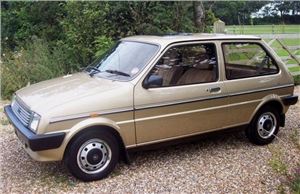
Austin Metro
Launched in 1980 and surviving the entire decade (only to be revamped and re-badged as a Rover for the ’90s), the original Austin Metro is one of today’s best first-time buys. The Metro was a massive hit, with steady development seeing the launch of five-door versions, a minor restyle and numerous different trim derivatives, as well as the sporty MGs. Power came from 1.0- and 1.3-litre A-series engines, which at least meant the Metro was well-proven mechanically. Most examples have long since rusted away, yet low-mileage Austin Metros in great condition do crop up; and they’re excellent value, with anything between £1500 and £3000 securing a superb survivor.

Volkswagen Golf MkII
The Golf MkII arrived in 1983 and now makes a superb first-time buy for fans of ’80s classics. Ultimate version is inevitably the GTi, a car that’s following the original in terms of rising values – which means paying £5-6000 (or more) for an excellent example. Most interesting of the non-GTi MkIIs is the 1.6-litre Driver, a GTi lookalike with a sporty feel and hopefully an asking price that’s around 50% less. On the other hand, why not spend just £1500-2000 on a low-mileage, well-preserved C, CL or GL from a private seller and enjoy one of the best-engineered, most solidly built hatches of its generation?
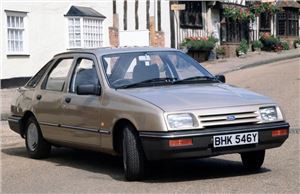
Ford Sierra
Ford’s big news of 1982 was the launch of the Cortina-replacing Sierra, which retained its predecessor’s rear-wheel drive layout but was fresh and modern in every other respect. Not everyone took to its curvaceous styling straight away, but the Sierra aged well and remained in production (via the odd facelift) for more than a decade. It spawned iconic sporting versions like the original XR4i and subsequent RS Cosworth, but for first-time buyers a standard-spec Sierra makes a great family-size classic choice – aided by a wide range of engines and different trim levels. Pay just £1200-2500 for a decent early car and you’ll soon be turning heads.
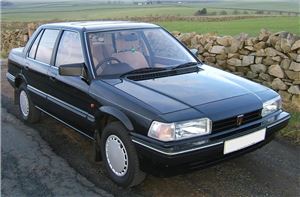
Rover 200 'SD3'
Forget the Hyacinth Bucket jokes and focus on the fact that the 1984-90 SD3-generation Rover 200 is one of today’s best buys if you crave a compact, good looking saloon that’s great value for money. The Rover 213 used a 1342cc Honda engine, while the 216 featured Austin Rover’s 1598cc S-series unit. The arrival of the 216 Vanden Plas EFi brought the ultimate in small-Rover opulence, while the launch of a 103bhp (up from 85bhp) 216 Vitesse added a touch of dash to the range. There are still original, low-mileage cars around, and many struggle to achieve much more than £1200-1500. An SD3 suddenly makes sense, doesn’t it?
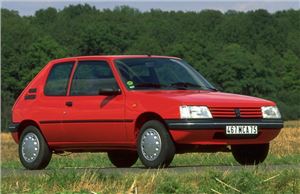
Peugeot 205
Arriving in 1983 and remaining on sale into the mid-1990s, the 205 was a phenomenal success. The 1984-on GTi is still considered one of the best hot hatches of the 1980s thanks to its superb performance and truly impressive handling; but even a bog standard 205 can be an entertaining first-time buy, with its combination of lightweight design, decent grip and good performance providing plenty of fun. Superb, low-mileage GTi models can often be seen advertised at £15,000-plus, although £8-10,000 should buy an excellent survivor. Or why not spend just £800-1500 on a well-preserved standard-spec 205 and enjoy one of the best superminis of its era?

Vauxhall Cavalier MkII
Pre-dating its Sierra rival by a year was the 1981-on second-generation Cavalier, which made the switch to front-wheel drive and was a vastly more modern offering than its predecessor. With sharp styling, excellent performance and impressive front-drive handling, the Cavalier MkII was seriously competitive – which helps explain why more than 100,000 a year were sold in Britain during its heyday. It was also the only Cavalier available in saloon, hatch and estate guises, ensuring maximum appeal. And that appeal is still strong now, with good to excellent Cavaliers available for £1000 to £3000-plus; for a family-size classic still capable of daily use, that’s a small price to pay.
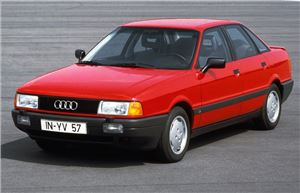
Audi 80
Volkswagen Group’s attempt at cracking Britain’s hotly-contested executive saloon market received a major boost in 1986 with the launch of the latest-generation Audi 80. Known as the B3-series, this all-new model was an instant hit for VW’s most upmarket division of the time, combining a modern front-wheel drive layout with a range of excellent petrol and diesel powerplants. The five-cylinder (but otherwise identical) Audi 90 arrived in due course, as did estates and all-wheel drive Quattro versions of the 80 at the top of the range. Entry-level 80s offer the best value now, with decent sensible-mileage cars available from just £2000-2500. It’s a tempting choice...

Mercedes Benz 190
Launched in 1983, Mercedes-Benz’s new entry-level model was from an era when the company’s build quality and the reliability of its products were among the best; and more than thirty years later, this ‘compact’ Merc makes a superb first-time buy. A wide choice of petrol and diesel engines is available, with buyers wanting the most power opting for either 190E 2.6 (six-cylinder) or 2.3/2.5-litre 16-valve Cosworth versions. Values of the best 190s are rising (a mint Cosworth is often £25,000-plus), but it’s still possible to spend as little as £2-4000 on a bog-standard 1.8 or 2.0 in excellent order and with years of reliable motoring still ahead of it.

Ford Fiesta MkII
The original Fiesta had been a best-seller since 1976, but in ’83 it came in for a refresh. The newcomer was heavily based on its predecessor, but with curvaceous front-end styling and a mildly modified rear it managed to look quite different. The interior received a new dashboard and other upgrades, while the following year saw the old 1.3-litre engine replaced by a 1368cc CVH unit (to complement the 957 and 1117cc powerplants). Highlight of the range was the sporty new XR2, complete with 96bhp 1.6-litre CVH; but with the best XR2s now fetching £15,000-plus, it falls to the entry-level MkIIs to offer the best value at £2-4000.
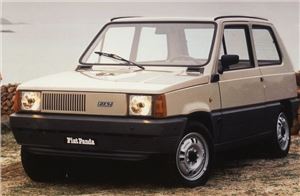
Fiat Panda
We could have included the Uno here (another great supermini of the ’80s), but we feel the smaller Panda offers a fantastic combination of quirkiness and imaginative design. Many consider the Panda to be the 1980s equivalent of the Citroen 2CV thanks to its functional styling, flat glass, hammock-style seating and ultra-basic specification. Remarkably, the Panda remained in production from 1980 through to 2003 (though UK imports ceased in ’95), and during that time it was ‘poshed up’ via extra equipment, more trim and new engines. Pay anything from a few hundred pounds to £3000 for an early car now and revel in its utilitarian brilliance.
